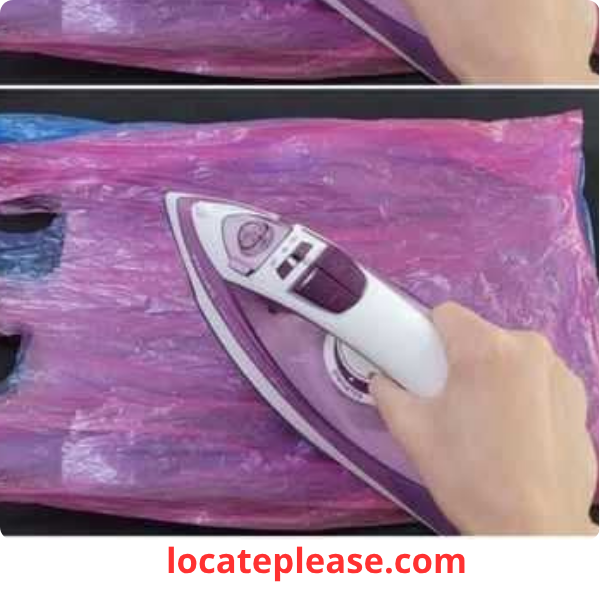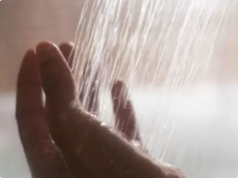You’ve used them to carry groceries, gifts, and everything in between.
Then they end up stuffed in a drawer, piled in a corner, or — worse — tossed into the trash after a single use.
But what if you could turn those flimsy plastic shopping bags into something strong, useful, and even beautiful?
Meet the surprising, satisfying, and eco-friendly craft that’s taking sustainability to the next level:
👉 Ironing plastic bags into waterproof fabric sheets.
Yes — you read that right.
With just a clothes iron, a cotton cloth, and a few plastic bags, you can create a durable, flexible, waterproof material perfect for crafting, organizing, and even fashion.
Why This Trick Is Genius
Plastic bags are one of the biggest environmental challenges — they take hundreds of years to decompose, pollute oceans, and harm wildlife.
Yet, they’re also incredibly durable and water-resistant — qualities we can repurpose, not waste.
By fusing plastic bags together with heat, you’re not just recycling — you’re upcycling them into a new material that mimics synthetic fabric or lightweight vinyl.
And the best part?
It’s easy, safe, and costs nothing.
How to Turn Plastic Bags into Reusable Fabric: Step-by-Step
What You’ll Need
- Clean, dry plastic shopping bags (preferably thicker ones like grocery or produce bags)
- A standard clothes iron
- An ironing board
- A clean cotton cloth or old pillowcase (to protect your ironing board)
- Scissors (optional, for trimming)
Step 1: Prepare the Bags
- Clean and dry the bags — remove receipts, staples, and handles.
- Cut off the handles and the sealed bottom if you want flat sheets.
- Open the bags and lay them flat.
💡 Tip: Use bags of similar thickness and color for best results.
Step 2: Layer the Plastic
- Stack 2–4 plastic bags on top of each other.
(Too many layers = too thick; too few = too fragile) - You can overlap them slightly to create a larger sheet.
Step 3: Protect Your Ironing Board
- Place a clean cotton cloth or pillowcase over the ironing board.
This prevents melted plastic from sticking to the surface.
Step 4: Iron on Low to Medium Heat
- Set your iron to low or medium heat (no steam).
- Gently press the iron over the plastic in smooth, circular motions.
- Don’t press too hard — let the heat do the work.
🔥 Watch closely: The plastic will start to shrink and fuse. Bubbles are normal — just keep ironing until smooth.
Step 5: Flip and Repeat
- Carefully flip the sheet over (use tongs if it’s still warm).
- Iron the other side the same way until fully bonded.
Step 6: Let It Cool
- Allow the fused sheet to cool completely before handling.
- It will become flexible, silky, and surprisingly strong.
✅ Pro Tip: Laminate multiple sheets together for extra thickness.
What You Can Make With Fused Plastic Fabric
Once you’ve created your eco-material, the possibilities are endless:
🧵 Reusable Tote Bags – Waterproof and durable
📓 Pencil Cases & Makeup Pouches – Easy to wipe clean
🎒 Lunchbox Liners or Coasters – Perfect for kids
🎨 Craft Projects – Sew, cut, or glue into wallets, book covers, or placemats
🌧️ Emergency Rain Ponchos – Lightweight and foldable
🧸 Doll Clothes or Toy Accessories – Great for kids’ crafts
It’s waterproof, tear-resistant, and machine-washable — ideal for high-use items.
Eco Benefits: More Than Just a Craft
By transforming plastic bags into something new, you’re:
- Reducing plastic waste
- Avoiding single-use culture
- Teaching kids about sustainability
- Creating free material for DIY projects
Every fused sheet means fewer bags in landfills or oceans.
Safety Tips
- Always work in a well-ventilated area — melting plastic can release fumes.
- Do not use high heat — it can burn the plastic and create harmful smoke.
- Keep the iron moving — don’t leave it in one spot.
- Never leave unattended — especially around children.
✅ Note: Use only polyethylene bags (HDPE or LDPE — the most common grocery bags). Avoid PVC or printed bags with heavy dyes.
Final Thoughts: Waste No More, Create More
That drawer full of plastic bags isn’t junk — it’s raw material waiting to be reborn.
With a little heat and creativity, you can turn what was once trash into functional, fun, and eco-friendly treasures.
So before you toss another bag, ask yourself:
Could this become a tote, a wallet, or a raincoat for my kid’s doll?
The answer is yes.
And it all starts with a simple iron.
One bag at a time, you’re not just cleaning up — you’re creating a greener future.










